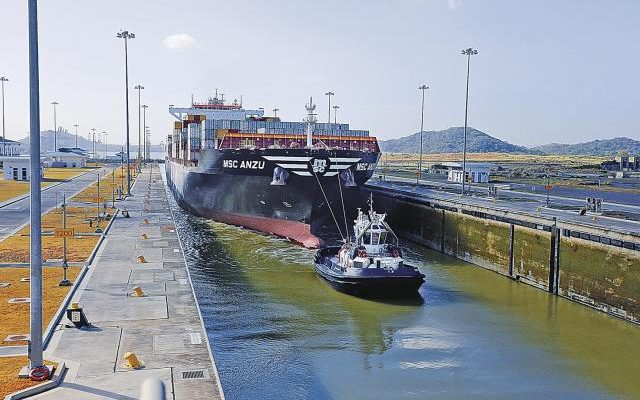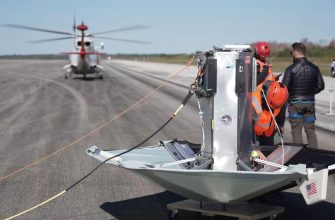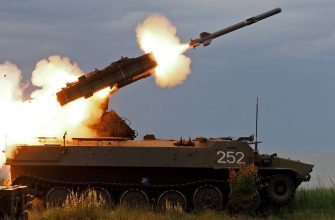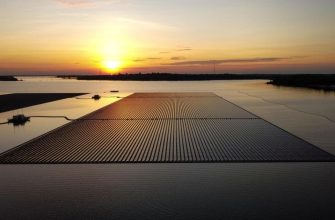On April 19, the Panama Canal began to implement its fifth draft restriction for neopanamax vessels

Transit of a neopanamax ship through the Panama Canal.Archive | The Star of Panama
The administrator of the Panama Canal, Ricaurte Vásquez Morales, stated in a statement released this Thursday that if the drought continued in the Central American country, they would have to decide, as an “extreme measure”, whether to limit daily transits in the canal from the current 36 up to a minimum of 28 boats.
“The Panama Canal, as an extreme measure, would have to make the decision to limit the number of transits through the Panama Canal. Let’s see what this means: we currently transit between 35 and 36 ships per day. We would have to go down to 32, to 28, those are extreme situations,” Vasquez said in a video.
This notice comes the same week in which the Government of Panama declared a state of environmental emergency due to the prolongation of the dry season, which is causing water supply problems.
The measure is based on the fact that high temperatures, evaporation and lack of rain are the preamble to the arrival of a possible El Niño phenomenon. The artificial lakes Alhajuela and Gatún, which supply water to more than half of the country’s population and to the Panama Canal, “have been drastically reduced by the prolongation of the dry season,” according to the Government.
YEARS OF WARNINGS
The administrator of the Panama Canal, through which about 3% of world trade passes, assured that the “climate emergency is an issue” about which they have been “warning for many years.”
“We just never knew what year a case like the one we’re experiencing now was going to happen, but it could happen at any time. The last severe dry spell we had was in 2019-20, and typically these cycles repeat once every five years. What we are seeing now is that it is being repeated once every three years. That should alert us to the urgency,” he stressed.
In the midst of the severe drought that Panama experienced in 2019, the maximum draft in the Neopanamax locks, those that pass through the expansion inaugurated in 2016, was temporarily reduced to 44 feet (13.4 meters), which meant a drop in revenue from tolls.
On April 19, the Panama Canal began to implement its fifth draft restriction for Neopanamax vessels, which triple the size of the vessels that pass through the century-old locks, which were offered a draft of 47.5 feet instead of of the maximum allowed of 50, thus reducing the volume of cargo.
According to Vásquez, it is necessary to discuss how the “climate impact” affects the availability of water, a problem that has repercussions in many sectors, such as agriculture or energy consumption.
GUARANTEE WATER FOR 50 YEARS
The Panama Canal, in addition to making sure that it uses “less water in transit,” is waiting to receive the results of some research work with which they hope to “make a national proposal in favor of resolving the water issue, for at least in the operation of the Canal and human consumption, for the next 50 years”.
For now, one of the measures that the Canal is carrying out to reduce consumption, explained Vásquez, is to combine “the water from one side of the lock to the other,” in addition to “scheduling the transits in such a way that” it can be reused. the greatest amount of water “inside each one of the chambers to be able to transit more ships”.
The passage of the boats through these locks occurs thanks to the filling and emptying of water so that the boats can circulate in sections of different levels through the Canal.
“So far transit has not been affected. The only early warning we have is the fact that fewer ships are arriving through Panama. That is, before we were receiving 40 arrivals every day, now that number has decreased, and that is an early warning of what may happen,” the administrator noted.
However, he clarified, “this is the time in the cycle of the year where there are fewer arrivals”, so perhaps it is due to a more “seasonal” problem than a decision by the shipping companies to opt for another route, something that it takes time.
Panama’s climate system is governed by a rainy season and a dry season. The first begins in May when the cycle is normal and lasts approximately until November, and the second goes from December to April, except for the Caribbean side where it rains almost all year. This 2023 the drought has been prolonged.






